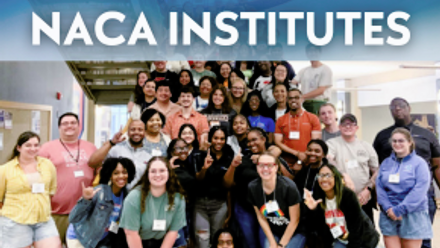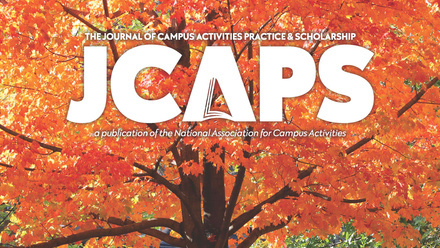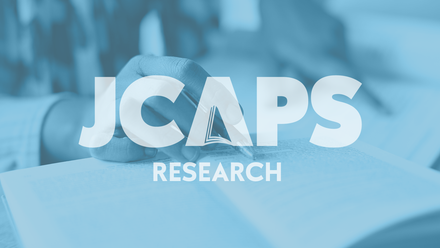Empowering Students to “Think For Themselves”
College is a time of limitless possibilities and a blank slate to design our lives - a period of important decisions that will shape our future.
But for many students, they lack the ability to tap into its power because of fears, doubts and preconceived expectations. I can’t count the number of people I’ve met that are 10 years into their career and wish they had been more thoughtful about how they approached important decisions they made in college that shaped the rest of their lives.
The solution is to teach students not only about alternative paths they may not have considered, but to empower them to actually have the strength and skills to think for themselves. This way of thinking is a methodology called “First Principles Thinking.”
First Principle Thinking is the process of questioning established assumptions and deriving solutions from independent analysis rather than relying on tradition and what others are doing. Being able to think this way is the truest path to a life of internal satisfaction instead of external validation.
Why this is important:
With the rapid adoption of artificial intelligence and social media, using first principles has become increasingly more important. We risk students falling prey to prioritization of short cuts, quick fixes, copying others, and seeking validation over independent critical thinking skills.
On top of this, some of the most important decisions of their lives will be made in college - what they choose for their career, where they do it from and with who. During this exciting phase of self discovery and decision making, helping students lean into their own power of independent thought and choice, can free them from preconceived expectations that they (or others) have put on themselves. Ultimately the goal is to empower our students to make a series of important choices they’ll be satisfied with in the future.
First Principles Methodology - an example:
Here’s a practical step-by-step framework for encouraging individuals to think independently, challenge the status quo, and explore new possibilities that can uncover unconventional - but perfect for them - solutions (in and outside of the classroom). This example is for choosing a career, but it could also be adapted and used for other decisions like whether to have children or where to live long-term.
- Identify the problem or choice to be made (e.g. what career should I pursue?) and acknowledge that this is a significant decision that will impact your future.
- Break it down by aligning on the fundamental principles important to you. For example, you might identify variables such as work-life balance, financial stability, growth opportunities, utilization of specific skills or an ability to make an impact as important variables related to your career choice. These are your foundational truths not dependent on further justification. For this exercise, identify your top three.
- Question existing assumptions by first acknowledging societal expectations or personal pressure you might feel towards your career. For instance, call out and start to question assumptions like "I need to choose a traditional career path to be secure" or "I need to pursue a career that others will respect" or “my degree can only be leveraged in specific industries”. Write how these assumptions might not actually be true.
- Brainstorm and imagine many different possibilities. Based on the fundamental principles you've identified in step two, explore various career possibilities that align with those principles you decided were important for you. Imagine 5-10 different scenarios and professions that could fulfill those top principles. This is your chance to seek novel solutions and really challenge yourself to think beyond the existing possibilities and identify those that may have been overlooked.
- Test and validate. Research and gather information about the careers you've identified by choosing two unconventional paths you hadn’t previously identified along with two careers you had in mind before this exercise (four paths total). Seek insights from professionals in those fields, read books or articles, explore online resources but as much as possible, look for real-world examples and success stories to assess whether the careers truly align with your top three fundamental principles identified in step two.
- Evaluate the trade-offs. Assess the pros and cons of each of the four potential career paths. Consider factors such as education requirements, job prospects, salary potential, work environment, and personal satisfaction. Compare how each path aligns with the fundamental principles you identified earlier.
- Make an informed decision. Based on the information and insights you've gathered, make a decision that feels right for you. Remember that this decision may not be set in stone and can evolve over time. Trust your judgment and be open to adapting your career path as you gain new experiences and insights. Using your top three fundamental principles when assessing your career in the workplace can help you make necessary pivots to ensure personal career satisfaction.
Building a culture of First Principles on campus
Here are some ways to empower students more generally to use first principles thinking. It involves creating an environment that encourages critical thinking, independent exploration, and self-reflection. This can happen both in and outside of the classroom.
- Encourage questioning and provide opportunities for open discussions and debates
- Celebrate diverse career paths by ensuring unconventional career paths are represented and shown as viable alternatives (e.g. guest speakers and career fair booths)
- Hold space for students who might feel pressured to pursue career paths from outside factors by making 1:1 counseling readily available
- Encourage students to think about the life they want to live outside of college by hosting hands-on lifestyle design workshops or pointing to educational resources that help reverse-engineer your ideal lifestyle
- Emphasize the importance of lifelong learning and continuous adaptability in today's rapidly changing job market.
- By implementing these strategies, you can create an environment that empowers students to apply first principles thinking to their career decisions - or other important choices - helping them make more informed and fulfilling choices and helping them rapidly adapt to today’s changing career landscape in ways that work for them.






